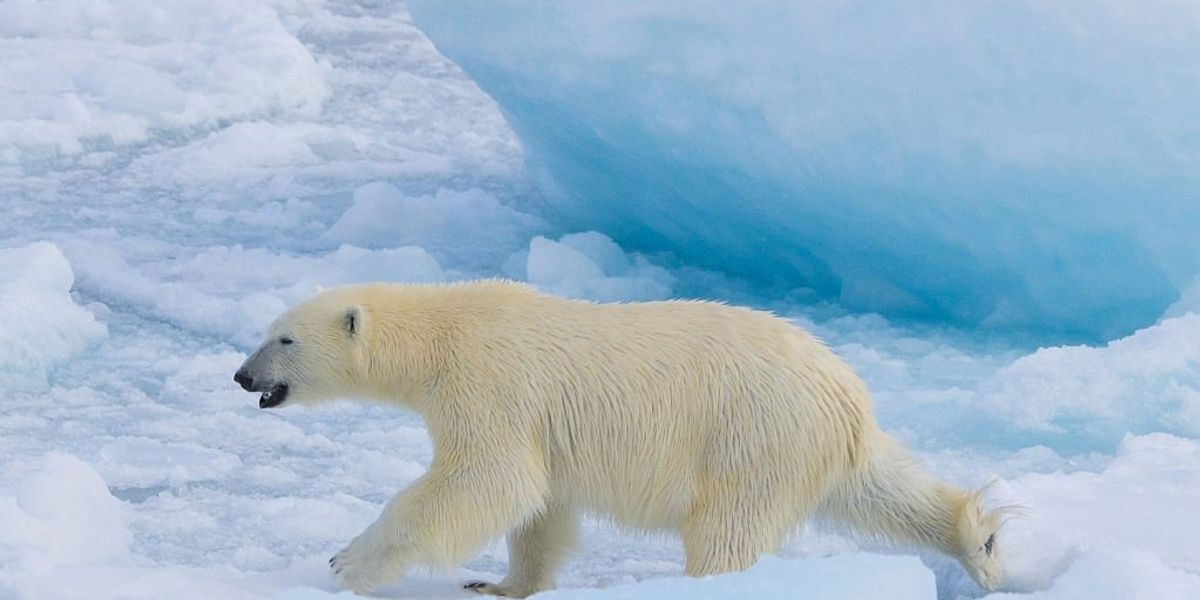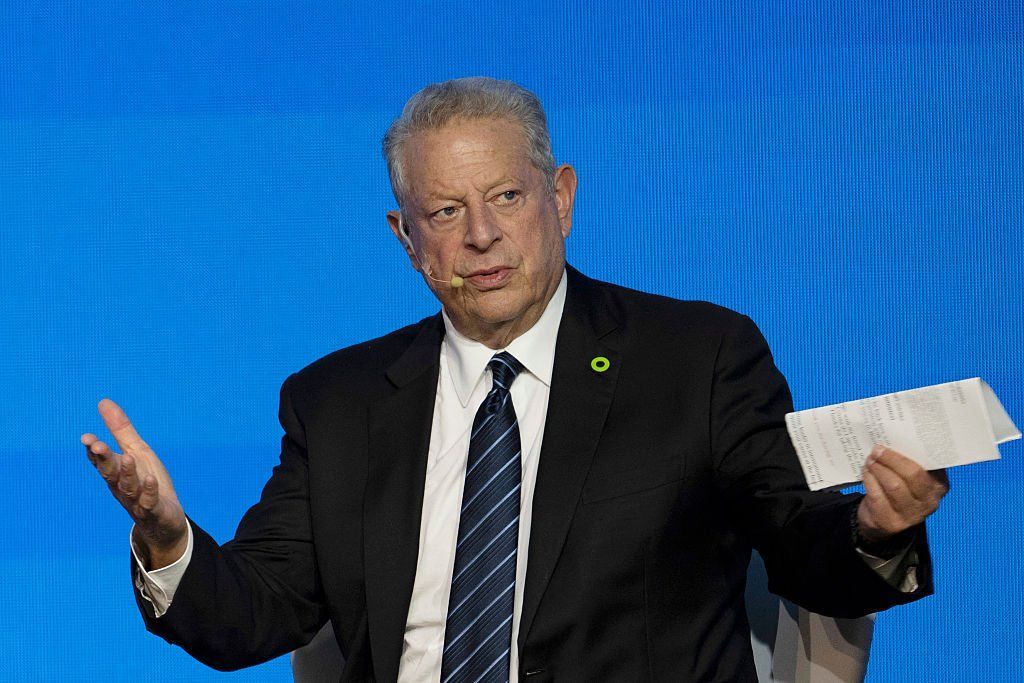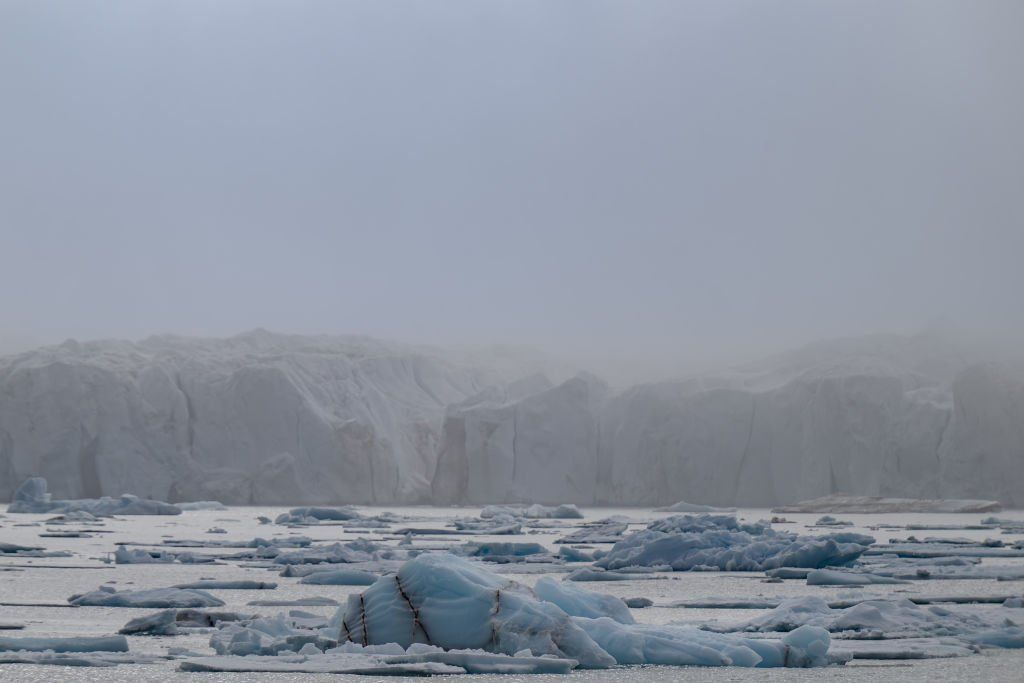

Failed presidential candidate Al Gore claimed in his 2007 Nobel Peace Prize acceptance speech that the previous year, “as the Northern Hemisphere tilted away from the sun, scientists reported with unprecedented distress that the North Polar ice cap is ‘falling off a cliff.’ One study estimated that it could be completely gone during summer in less than 22 years.”
Two years later, the climate alarmist told the Copenhagen Climate Conference that new research indicated there was “a 75% chance that the entire north polar ice cap during some of the summer months could be completely ice free within the next five to seven years.”
It turns out Al Gore, whose fearmongering reportedly nets him $200,000 per speaking engagement, was not only wrong about a 20-foot rise in the global sea level “in the near future,” polar bear drownings, and the snows of Kilimanjaro, but also about the future of Arctic ice.
A paper published this month in the American Geophysical Union’s biweekly peer-reviewed scientific journal Geophysical Research Letters indicated that over the past 20 years, “Arctic sea ice loss has slowed considerably, with no statistically significant decline in September sea ice area since 2005.”
This slowdown in the loss of Arctic sea ice was pronounced across all months of the year and could “plausibly” continue over the next decade.
The researchers behind the paper — from Columbia University and the University of Exeter — indicated that even with relatively high global temperatures, “climate modeling evidence suggests we should expect periods like this to occur somewhat frequently.”
RELATED: Netflix rebooting ‘Captain Planet’ to push pagan climate propaganda on new generation of kids
 Photo by PABLO PORCIUNCULA/AFP via Getty Images
Photo by PABLO PORCIUNCULA/AFP via Getty Images
Natural factors, variations in ocean currents in particular, have a tremendous impact in this arena — accelerating, slowing, or reversing ice loss — and have apparently served in recent decades to offset the impact of relatively high global temperatures.
This natural corrective is all the more critical as humans reduce their emissions.
‘Now the [natural] variability has switched to largely cancelling out sea ice loss.’
While the authors take for granted that ice loss over the past 50 years has been driven in part by “human-induced climate change,” they acknowledged that there was actually significant Arctic sea ice expansion during at least one other period of increasing anthropogenic greenhouse emissions — from the 1940s to the 1970s.
An increase in industrial aerosol emissions from North America and Europe reportedly helped cool the Arctic in the mid-20th century. The very phase-out of exhaust — particularly sulfur emissions — from ships that some environmentalists advocated for appears to have “contributed to enhanced global and Arctic warming since 2020,” said the paper.
The National Oceanic and Atmospheric Administration’s Climate Program Office indicated that in 2020, new international shipping regulations “drastically” cut sulfur emissions from ships. The exhaust they previously created — reflective clouds called “ship tracks” — had long reflected sunlight back into space, thereby cooling the planet.
“It is surprising, when there is a current debate about whether global warming is accelerating, that we’re talking about a slowdown,” Mark England, the researcher who led the study, told the Guardian.
While willing to admit the alarmism of yesteryear was bunkum, England still was sure to tinge his forecast with pessimism.
RELATED: The climate cult is brainwashing your kids — and you’re paying for it
 Photo by Sebnem Coskun/Anadolu via Getty Images
Photo by Sebnem Coskun/Anadolu via Getty Images
“The good news is that 10 to 15 years ago when sea ice loss was accelerating, some people were talking about an ice-free Arctic before 2020,” said England. “But now the [natural] variability has switched to largely cancelling out sea ice loss. It has bought us a bit more time, but it is a temporary reprieve — when it ends, it isn’t good news.”
England emphasized the need to maintain a sense of urgency and alarm, stating, “Climate change is unequivocally real, human-driven, and continues to pose serious threats. The fundamental science and urgency for climate action remain unchanged.”
While Arctic ice loss has slowed, the Antarctic has been gaining ice in recent years.
According to a 2023 study published in the European Geosciences Union’s peer-reviewed journal the Cryosphere, the Antarctic ice shelf area grew by 2048.27 square miles between 2009 and 2019, gaining 661 gigatonnes of ice mass “with 18 ice shelves retreating and 16 larger shelves growing in area.”
Like Blaze News? Bypass the censors, sign up for our newsletters, and get stories like this direct to your inbox. Sign up here!















